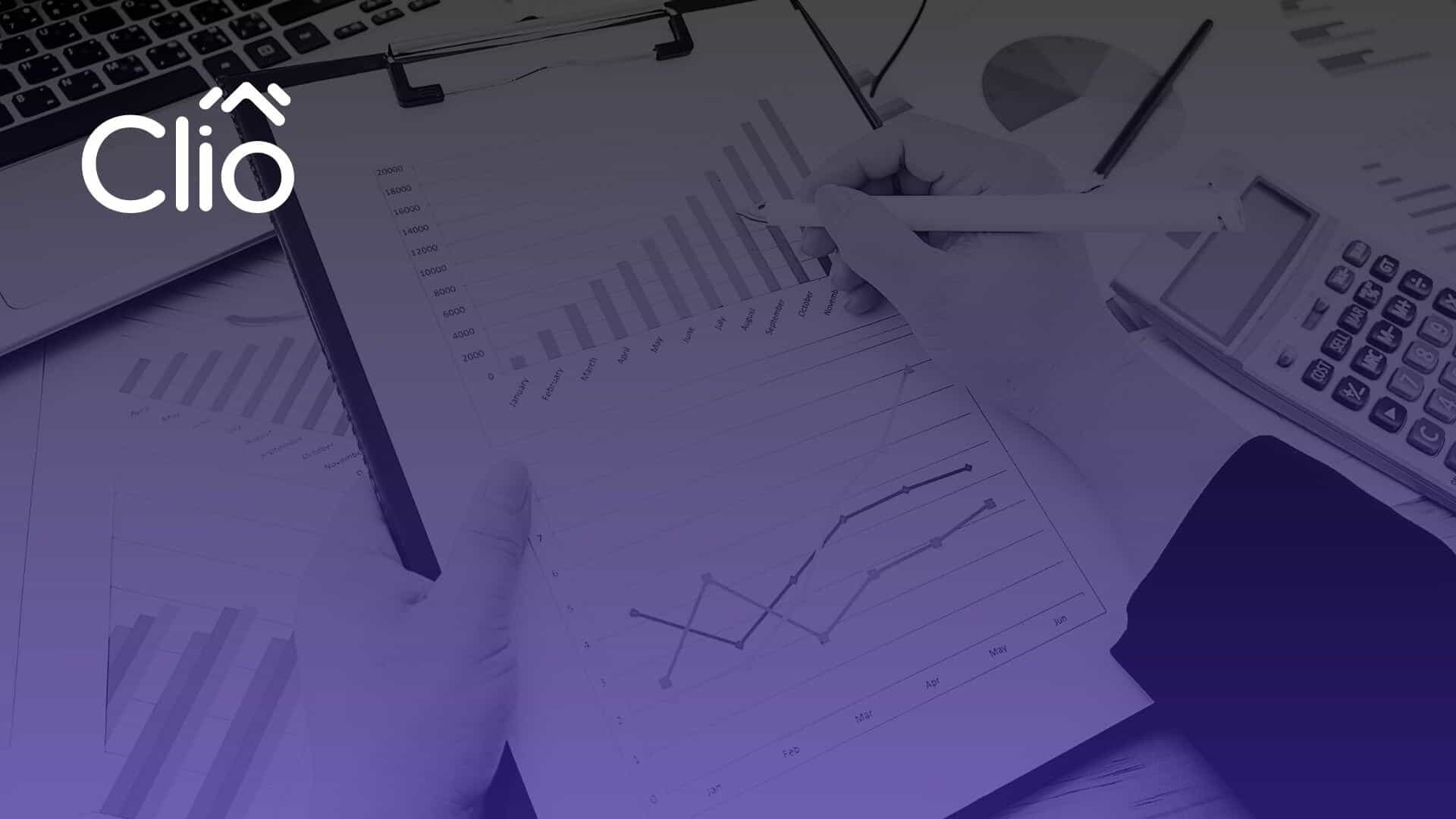Quick Summary
Website ROI shows how well your website performs against the money you’ve invested in it. This guide breaks down how to calculate ROI, what to track, and how to boost results through clear goals, better performance, and data-driven decisions. Whether you’re running an eCommerce store or a service-based business, these strategies are helpful. For more practical tips and expert insights, check our blog.
Learn How to Turn Your Website into a Powerful Business Asset
A visually impressive website is great, but if it’s not generating leads, sales, or efficiencies, what’s the point? Website ROI, or return on investment, measures how effectively your website drives results compared to what you’ve invested in building and maintaining it.
Understanding website ROI helps businesses make smarter decisions about design, marketing, and ongoing improvements. But this is only attainable when it’s properly measured—a challenge many businesses face today.
In this Clio article, we break down what website ROI is, how to calculate it, and what practical steps you can take to improve it. This guide is designed to help you get more value from your website.
Why Listen to Us?
At Clio, we specialize in web design, development, and maintenance. With over 15 years of experience and a track record of helping 300+ businesses grow online, we understand how critical a positive website ROI is to long-term success.
We’ve supported clients across industries by delivering strategic, results-driven website improvements that consistently boost performance.

What is Website ROI?
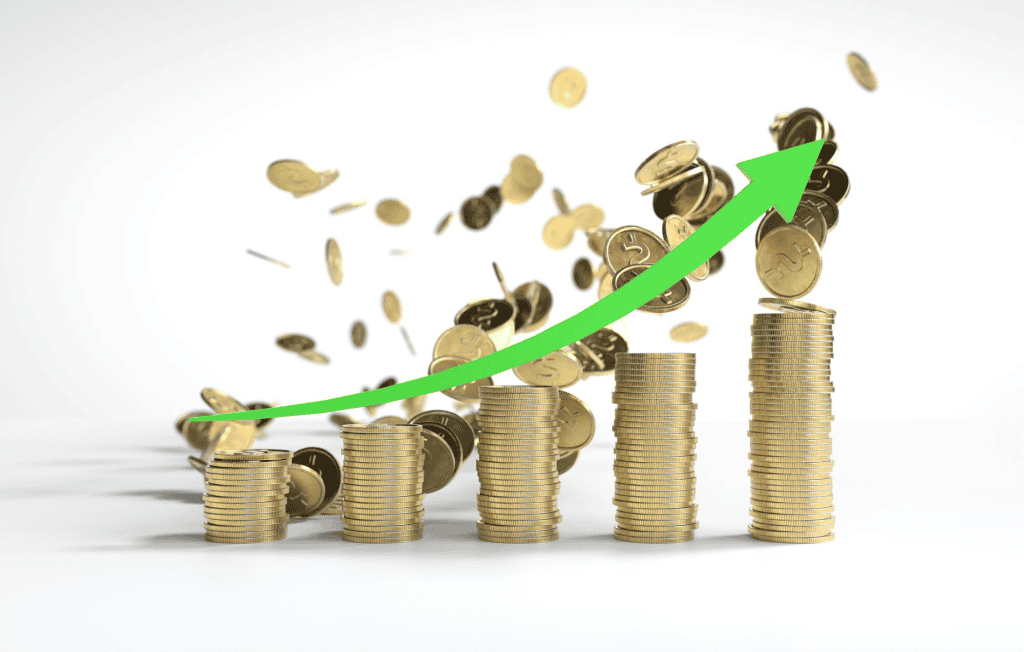
Website ROI (Return on Investment) is a measure of how much value your website generates compared to the amount you spend on it.
Expenses typically include upfront design and development costs, ongoing maintenance, and marketing efforts. Value, in this context, includes leads generated, sales made, time saved, and improvements in customer engagement or brand visibility.
A positive ROI means your website is delivering measurable results that contribute to your business goals, while a negative ROI indicates your site isn’t pulling its weight and may be costing more than it returns.
Understanding these variables helps you pinpoint where your website is performing well and where there’s room to improve.
Why Should You Evaluate Your Website ROI?
Evaluating your website’s return on investment (ROI) is important for several reasons:
- Informed Decision-Making: Understanding your website’s ROI helps you assess its effectiveness as a marketing tool, guiding strategic decisions to enhance performance.
- Resource Allocation: By analyzing ROI, you can identify which aspects of your website are delivering value and which aren’t, allowing for better allocation of resources.
- Performance Evaluation: Regularly assessing ROI enables you to monitor your website’s contribution to business goals, ensuring it remains aligned with your objectives.
- Budget Optimization: Evaluating ROI ensures that your website justifies its costs, helping maintain a balanced marketing budget.
- Competitive Advantage: Regularly assessing ROI allows you to identify opportunities for improvement, keeping your website ahead of competitors.
Overall, determining your website’s ROI is necessary for optimizing its performance, ensuring efficient resource use, and achieving your business objectives.
How to Calculate and Evaluate Your Website ROI
1. Determine the Cost
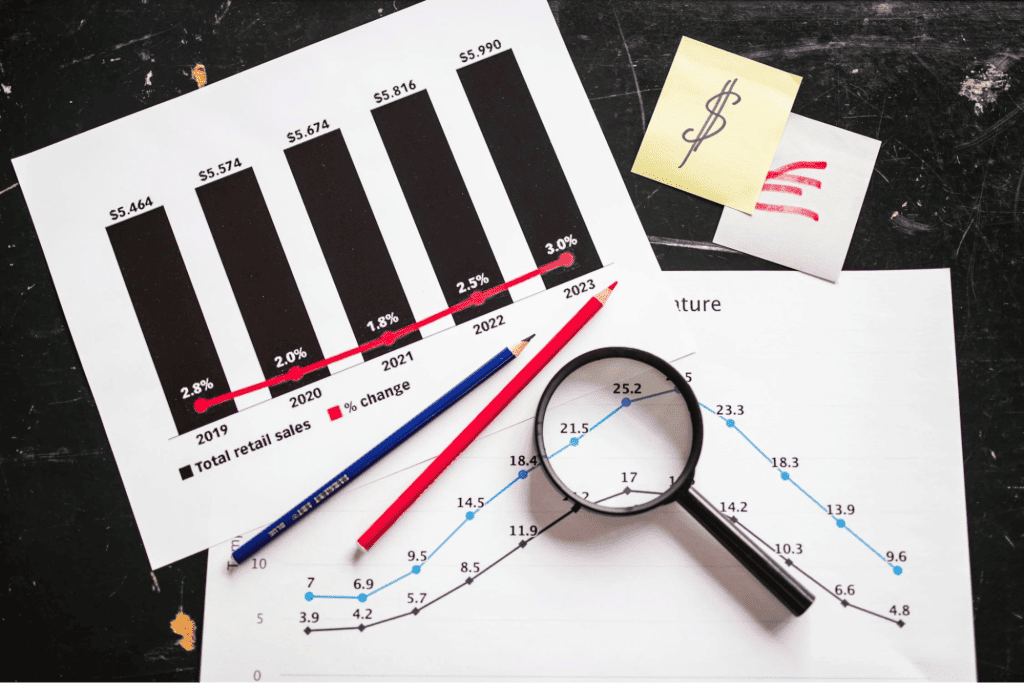
To evaluate your website ROI, the first step is understanding your total investment. This goes beyond the initial build, it includes everything that keeps your site running and performing over time, such as:
- Design and Development Costs: Initial design costs can vary based on the complexity of your website. For example, simple websites may cost between $2,000–$5,000, while custom websites with more complex features can range from $10,000–$50,000 or more. These include:
- Website design and development
- Branding and visual identity
- Copywriting and content creation
- Project management and consultation
These are one-time investments, but they lay the foundation for how your site looks, feels, and functions.
- Ongoing Website Maintenance: Websites require consistent upkeep to remain secure, fast, and effective. These recurring costs typically range from $500–$2,000 annually and they help avoid downtime or performance issues. Consider:
- Web hosting and domain renewals
- Plugin and software subscriptions
- Regular content updates
- Security patches and bug fixes
- Technical support or developer retainers
- Other Marketing & SEO Expenses: To ensure your website drives traffic and generates revenue, ongoing marketing and SEO efforts are essential. These SEO services and digital marketing range from $500–$5,000 per month, depending on the business’s needs. These expenses may include:
- SEO services and keyword research tools
- Paid advertising (Google Ads, social media)
- Content marketing and blog strategy
- CRM tools, email platforms, and analytics software
These ongoing efforts help drive traffic, improve user experience, and ultimately contribute to revenue.
For example, let’s say you spent $6,000 on initial design and development, $150/month on maintenance and hosting, and $500/month on marketing and tools. That brings your annual website investment to:
- Design: $6,000
- Maintenance: $1,800 ($150/month × 12 months)
- Marketing and Tools: $6,000 ($500/month × 12 months)
- Total: $13,800 per year
And let’s say your website generates $28,800 in revenue in one year.
- Calculate ROI:
ROI = (Revenue – Investment) / Investment × 100
ROI = ($28,800 – $13,800) / $13,800 × 100 = 108.7%
This means your website is returning 108.7% of the amount you’ve invested, which shows that your website is performing well in terms of ROI.
2. Determine the Website Revenue
To calculate website ROI, you need to understand how much revenue your site brings in. This varies depending on your business model. eCommerce websites can track direct sales, while service-based businesses often focus on lead generation and indirect conversions.

Here are the key website activities and metrics to track in this step:
- Track Website Traffic: Traffic is the foundation of ROI. Measure total visits, traffic sources (organic, paid, direct, social), and user behavior (what pages they engage with and for how long). Tools like Google Analytics, Plausible, or Fathom can provide these insights.
NOTE: High traffic alone doesn’t guarantee high ROI, but it sets the stage for conversions.
- Track Leads: Leads are potential customers who take action, such as filling out a form, booking a consultation, or starting a free trial. Identify where these leads originate, blog posts, landing pages, or contact forms.
This data is often available in your CRM (like HubSpot, Zoho CRM, or Google Tag Manager).
- Track Conversions: Conversions happen when leads become paying customers. For eCommerce, this means completed purchases. For service businesses, it may be a signed contract or subscription.
- Calculate Your Closing Ratio: Your closing ratio is the percentage of leads that convert into customers. It ties website activity directly to actual revenue.
Closing Ratio = (Closed Deals) / (Total Sales Leads) X 100
Example: If your site brings in 3,000 visitors per month and 2% convert into leads, that’s 60 leads per month (3,000 × 0.02). Over a year, that’s 720 leads. If 10% of those leads become customers, you’ll close 72 customers annually.
3. Pricing Overview: What Does a Website Really Cost?
Pricing Models and Packages
Here’s an example of different pricing packages for website projects:
- Small Business Package ($3,000–$6,000): Basic design and development with minimal custom features and essential SEO.
- Medium Business Package ($10,000–$25,000): Custom design, advanced SEO, integrations (CRM, email), and monthly maintenance.
- Enterprise Package ($50,000–$100,000+): Full-scale custom design, complex features, high-level SEO, and ongoing strategic digital marketing support.
Customizable Options
Consider customizing your package based on business needs. For instance, you can add extra features like eCommerce, multi-language support, or advanced analytics at an additional cost.
4. Industry ROI Benchmarks
It’s important to measure your website ROI against industry standards to gauge its effectiveness. For example:
- E-commerce websites: Typically aim for a 200% ROI or higher, due to the direct revenue generation model.
- Service-based businesses: Aim for a 100% ROI, with more focus on lead generation.
- Content-driven websites: Can expect variable ROI depending on their focus, but aim for positive ROI through indirect conversions and advertising.
But here’s the catch…
A positive ROI is only part of the picture. To truly understand your website’s performance, compare it against industry benchmarks.
For example, if similar businesses average a 150% website ROI, and your website’s ROI is only 100%, it indicates that there’s still room for growth.
Remember: Benchmarks vary widely by industry, so it’s important to do your research. If your ROI is lower than expected, improving conversion rates, enhancing content, or adjusting your digital strategy could help you close the gap.
5. How Much Should You Invest for Maximum ROI?
As a general rule of thumb, businesses should allocate around 5–10% of their annual revenue to website development, marketing, and maintenance, depending on their business type and goals. This ensures that your investment in the website matches your revenue-generating expectations.
Best Practices to Improve Website ROI
Start with Clear Goals
If you don’t know what success looks like, you won’t know if you’re hitting it. Define specific website goals tied to business outcomes:
- Do you want to generate leads?
- Do you want to increase eCommerce revenue?
- Are you looking for more visibility?
- Do you want to grow your email list?
Make sure those goals are measurable and trackable.
Monitor Performance Consistently
Keep an eye on the technical side of your website. Slow page speeds, broken links, or frequent downtime can quietly erode trust and hurt conversions. Use tools like Google PageSpeed Insights or uptime monitors to flag issues before they become revenue blockers.
Refine your Sales Funnel
Map out how users move from first visit to conversion. Where are they dropping off? Which steps take too long? Streamlining your funnel whether through better CTAs, simpler forms, or clearer navigation can improve ROI without increasing traffic.
Use Data to Guide Decisions
Don’t imagine what’s working and what’s not. Use analytics to understand user behavior, traffic sources, and conversion paths. Look for patterns in what pages or campaigns lead to results. With the right insights, you can double down on what’s effective and refine what’s not.

Keep Content Aligned with intent
Your website content should speak directly to your audience’s needs and search intent. Outdated or generic content won’t convert. Regularly update pages, refresh blog posts, and align your messaging with what your users are actually looking for. This helps with both SEO and engagement.
Use A/B testing
Small changes can lead to big results, but only if you know what’s working. A/B testing allows you to compare two versions of a webpage, headline, CTA, or layout to see which performs better. Regular testing helps you make informed design and content decisions that directly improve conversions and boost ROI.
Work with an Experienced Partner
Improving ROI isn’t just about guesswork, it’s about knowing what to measure, what to tweak, and how to make your website work harder. If you find the process complicating, you can hire a professional to help out, whether a freelance web developer or a web development agency.
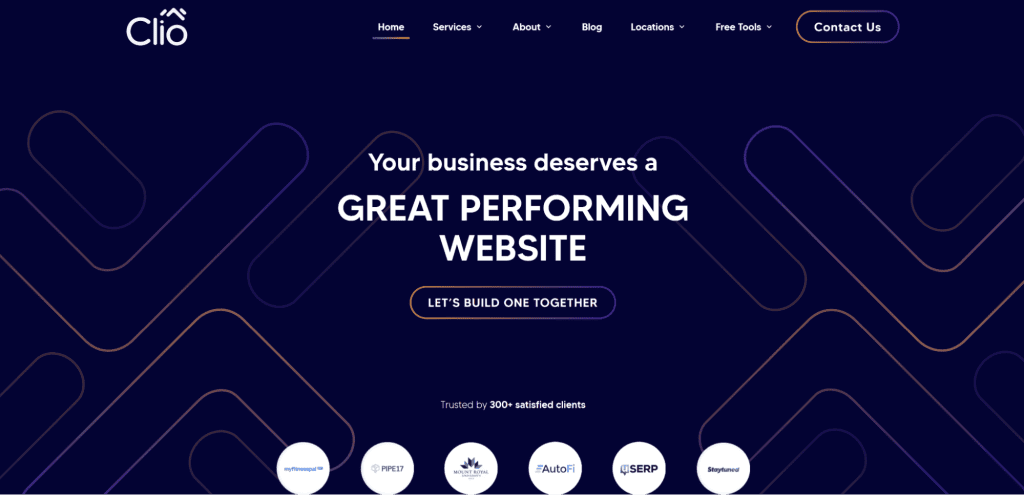
For example, Clio Websites is a full-service web development agency that designs, optimizes, and maintains high-performing websites for businesses across different industries. We implement results-driven strategies to optimize performance and conversion, turning websites into real growth engines for our clients.
Drive Business Success with a High-Performing Website
Website ROI is more than a number, it reflects how well your site supports your business goals. From tracking conversions to uncovering hidden value like time savings, ROI shows what’s working and where improvements are needed.
If your current ROI isn’t where it should be, it might be time for a change. Clio Websites can help you optimize your website to deliver more value, improving user experience, increasing conversions, and ultimately boosting your ROI. Starting fresh or refining an existing site, we focus on building websites that are not only visually appealing but also engineered to drive tangible business results.
Let’s make your website work harder for you. Contact us today to explore how we can help you achieve your goals!
